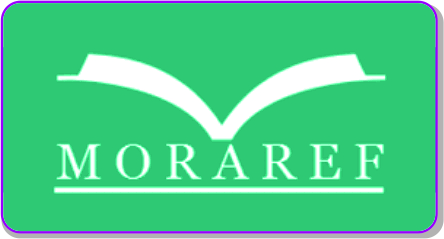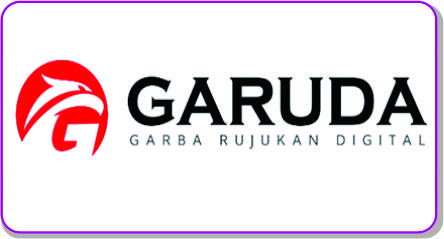Kemampuan Berpikir Lateral Siswa SMP Dalam Memecahkan Soal Matematika Berbasis Masalah
DOI:
https://doi.org/10.30983/lattice.v3i2.7627Keywords:
Lateral Thinking Ability, Problem SolvingAbstract
Every human being has a variety of activities or activities carried out for their needs, one of which is thinking. By thinking humans are able to get information, remember, plan and use it in everyday life. In this study using a quantitative correlation method that aims to find the influence or relationship of lateral thinking skills of junior high school students in solving problem-based math problems and the use of this method in order to obtain precise data and be able to be tested statistically. This study uses Purposive Sampling technique because the determination and sampling have been determined by the researcher, this method is very suitable for an institution such as a school. The results of this data show that the relationship between Lateral Thinking Ability and the Ability to solve problem-based math problems of junior high school students is Very Weak, which means that there are several possibilities that affect problem-solving abilities such as the ability of other aspects of thinking or lack of data from respondents. The lateral thinking ability of junior high school students shows a moderate level and in the ability to solve problem-based math problems has a high level of ability, but the results of the correlation test of the relationship between lateral thinking ability and problem solving ability have very weak relationship results, this means that problem solving ability can be influenced by other thinking factors or lack of data..
Â
Setiap manusia memiliki berbagai macam kegiatan atau aktivitas yang dilakukan untuk kebutuhan hidupnya, salah satunya yaitu berfikir. Dengan berfikir manusia mampu mendapatkan informasi, mengingat, berencana dan menggunakannya pada kehidupan sehari-hari. Dalam penelitian ini menggunakan metode korelasi kuantitatif yang bertujuan untuk menemukan pengaruh atau hubungan dari kemampuan berpikir lateral siswa smp dalam memecahkan soal matematika berbasis masalah dan penggunaan metode ini agar mendapatkan data yang presisi dan mampu diuji secara statistik. Penelitian ini menggunakan teknik Purposive Sampling karena penentuan dan pengambilan sampel sudah ditentukan oleh peneliti, metode ini sangat cocok dilakukan pada suatu lembaga contohnya seperti sekolah. Hasil data ini menunjukan bahwa hubungan Kemampuan Berpikir Lateral dengan Kemampuan memecahkan soal matematika berbasis masalah Siswa SMP yaitu Sangat Lemah yang artinya ada beberapa kemungkinan yang mempengaruhi kemampuan pemecahan masalah seperti kemampuan aspek berpikir lainnya atau kurangnya data dari responden. Kemampuan Berpikir lateral siswa smp menunjukan pada taraf tingkat sedang dan dalam kemampuan memecahkan soal matematika berbasis masalah memiliki kemampuan tingkat tinggi namun pada hasil uji korelasi hubungan kemampuan berpikir lateral dengan kemampuan pemecahan masalah memiliki hasil hubungan sangat lemah ini berarti kemampuan pemecahan masalah dapat dipengaruhi oleh faktor berpikir yang lain atau kurangnya data korespondensi.
References
Puspitaningtyas, “Proses berpikir lateral siswa sd dalam menyelesaikan masalah matematika open-ended ditinjau dari perbedaan gaya belajar,†MAJAMATH J. Pendidik. dan Mat., vol. 1, no. 1, pp. 24–30, 2019.
Wardhani, “Proses berpikir siswa berdasarkan kerangka kerja Manson.,",†JARME (Journal Authentic Res. Math. Educ., pp. 112–123, 2019.
Nurjanah, “Proses berpikir siswa berkecerdasan matematis logis dalam menyelesaikan masalah matematis,†J. Pendidik. Teor. Penelitian, dan Pengemb., vol. 4, no. 11, 2019.
Muliawati, “Proses Berpikir Lateral Siswa dalam Memecahkan Masalah Berdasarkan Gaya Kognitif dan Gender,†JP2M (Jurnal Pendidik. dan Pembelajaran Mat., vol. 2, no. 1, pp. 55–68, 2016.
Pradhini, “Meningkatkan Kemampuan Komunikasi dan Pemecahan Masalah serta Disposisi Matematis Siswa SMA melalui Strategi REACT,†STKIP Siliwangi Bandung, 2016.
M. Wati, G. H. Medika, and J. Junaidi, “Pengaruh Kemampuan Koneksi Matematis Terhadap Kemampuan Pemecahan Masalah Matematis Siswa,†Math Educ. J., vol. 5, no. 1, pp. 54–61, 2021, [Online]. Available: https://ejournal.uinib.ac.id/jurnal/index.php/matheduca/article/view/1823
H. K, “The effects of Polya’s heuristic and diary writing on children’s problem solving,†Math. Eduacation Res. J., vol. 7, no. 1, pp. 59–85, 2012.
“ANALISIS KEMAMPUAN PEMECAHAN MASALAH DITINJAU DARI MOTIVASI BELAJAR SISWA MTS,†Math. Learn. Educ., vol. 4, no. 4, 2019.
E. D. Bono, Think! Before it’s too late. London: Vermilion, 2009.
Puspitaningtyas, “Berpikir lateral siswa SD dalam pembelajaran matematika,†Mathema J. Pendidik. Mat., vol. 1, no. 2, pp. 24–30, 2019.
E. D. Bono, Berpikir Lateral Buku Teks Kreativitas. Jakarta: Erlangga, 1991.
Hildayanti, “Penerapan model pembelajaran poget menggunakan media audiovisual dalam membangun kemampuan berpikir lateral siswa,†SNP2M, pp. 325–330, 2019.
E. D. Bono, Lateral Thinking Step By Step. Malta: Kindle Edition, 1970.
P.A, “KEMAMPUAN BERPIKIR LATERAL SISWA SMP DALAM MEMECAHKAN MASALAH MATEMATIKA OPEN-ENDED DITINJAU DARI GAYA BELAJAR SENSING DAN INTUITION,†MATHEdunesa, vol. 11, no. 2, pp. 513–524, 2022.
Wantika, “Kemampuan berpikir lateral siswa smp pada pemecahan masalah geometri,†PRIMA, Pros. Semin. Nas. Mat., pp. 932–937, 2019.
“Purposeful Sampling for Qualitative Data Collection and Analysis in Mixed Method Implementation Research,†Adm. Plicy Ment. Heal. Res., vol. 42, no. 4, pp. 533–544, 2015.
Downloads
Additional Files
Submitted
Accepted
Published
Issue
Section
License
Authors who publish with Lattice Journal : Journal of Mathematics Education and Applied agree to the following terms: Authors retain copyright and grant the Lattice Journal : Journal of Mathematics Education and Applied right of first publication with the work simultaneously licensed under a Creative Commons Attribution License (CC BY-SA 4.0) that allows others to share (copy and redistribute the material in any medium or format) and adapt (remix, transform, and build upon the material) the work for any purpose, even commercially with an acknowledgement of the work's authorship and initial publication in Lattice Journal : Journal of Mathematics Education and Applied. Authors are able to enter into separate, additional contractual arrangements for the non-exclusive distribution of the journal's published version of the work (e.g., post it to an institutional repository or publish it in a book), with an acknowledgement of its initial publication in Lattice Journal : Journal of Mathematics Education and Applied. Authors are permitted and encouraged to post their work online (e.g., in institutional repositories or on their website) prior to and during the submission process, as it can lead to productive exchanges, as well as earlier and greater citation of published work (See The Effect of Open Access).








